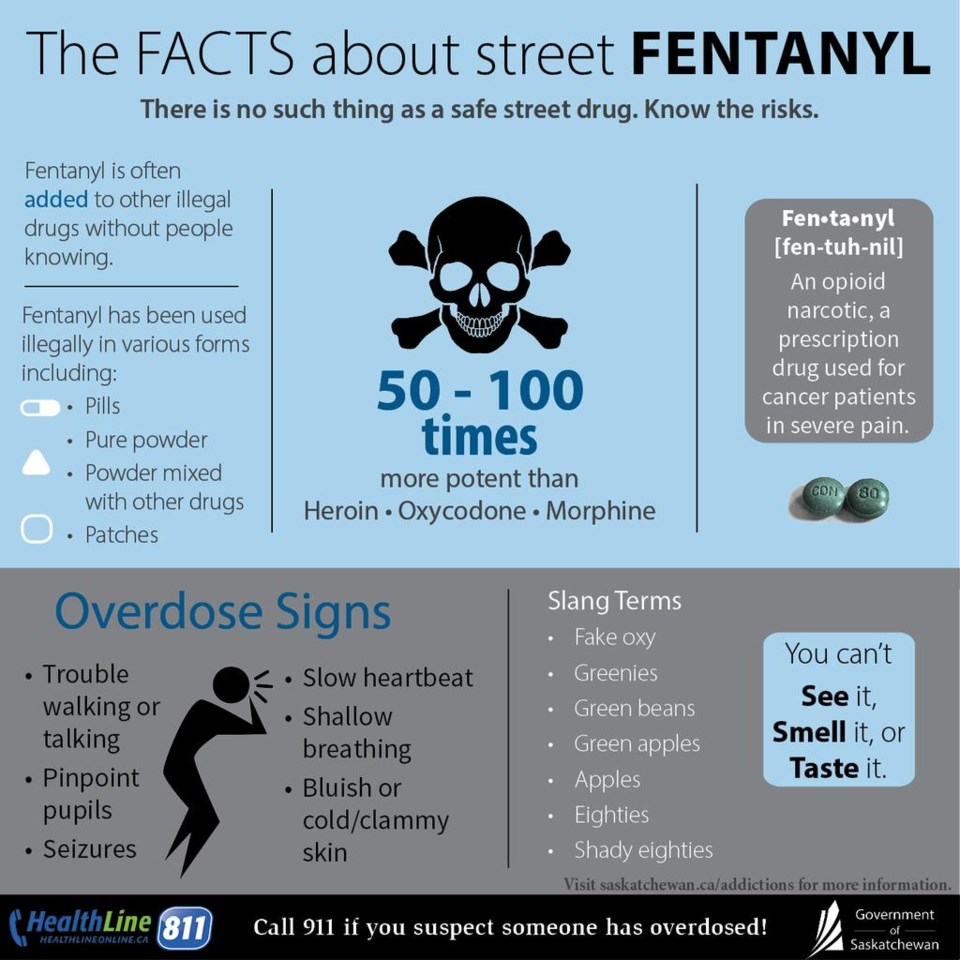A new, dangerous drug is becoming popular for recreational use in Western Canada, and has made its way into Saskatchewan.
Fentanyl, a powerful synthetic painkiller that comes in a variety of forms, is becoming increasingly popular, despite the danger it entails when consumed without medical supervision.
According to Dr. Saqib Shahab, chief medical officer with the Ministry of Health, the number of overdose deaths of fentanyl in Saskatchewan has increased to 10 deaths so far this year, compared to a total of 10 deathsin 2014, for the entire year and “about three” per year in previous years. The risk of overdose increases as the drug becomes more popular and
available.
Fentanyl comes in an assortment of forms, including pills and powders, and is often mixed with other drugs like oxycodone, ketamine or MDMA (an acryonym for its chemical name 3,4-methylenedioxymethamphetamine), making it all the more dangerous in combination with other substances.
“Fentanyl is a very powerful opioid that is being sold as a street drug,” said Shahab. “People are taking it, not thinking it’s fentanyl and assuming they’re taking something that’s not as strong.”
Another danger associated with the drug is that it’s made in illicit conditions with no quality control or regulation on content. Without regulation or quality control, there is no way to determine how much of the drug there is, or whether or not it’s contaminated in some manner.
“One pill can have a very small amount and another pill can have a fatal overdose,” said Shahab. “You really have to avoid even taking that single pill that’s been manufactured illicitly.”
He said even experienced drug users can easily overdose on fentanyl because of how powerful the drug is, and how unclear its concentration is when the fentanyl taken is illegally
manufactured.
When used medically, fentanyl is a powerful analgesic used to treat pain, usually in the form of a patch affixed to the skin. Often it is used when other drugs have proven insufficient. According to a press release from the Ministry of Health, fentanyl is 50-100 times stronger than other opioid drugs such as morphine or oxycodone. Even when used under proper medical circumstances, the drug requires close monitoring of patients to avoid accidental overdose.
Another way people are obtaining access to the drug are through diverted prescriptions. Even with a genuine version of the drug is dangerous, if it’s being used for reasons other than what it’s prescribed for. Shahab noted fentanyl is an extremely powerful drug, which makes it easy to overdose on.
“If you’re taking a drug for other than for the reason you’re supposed to be taking it, then it’s a concern,” said Janice Giroux, vice president of Sun Country Health Region. “People need to make sure they use the right medication for the right reason. I’m not sure what’s on our streets, but we don’t want it to be a drug that’s abused in the Sun Country Health Region.”
Initially, the trend of fentanyl consumption began in B.C., where it spread to Alberta over the last few years. Its presence continued eastward into Saskatchewan. Shahab noted fentanyl abuse has also spread into Manitoba and Ontario.
“The main message of all this is, don’t take any drugs without a prescription, especially if you don’t know what’s in them,” said Shahab.
Shahab also cautioned anyone who might be experiencing a potential overdose situation not to hesitate to contact emergency services.
“If you see someone who may have overdosed, you really have to call 911 and get help. You shouldn’t worry about ‘getting into trouble’ or something like that,” said Shahab. “There is an antidote for fentanyl called naloxone, something that EMS and ERs both have.”
Signs of an overdose to watch out for include shallow breathing, drowsiness, slurred speech, loss of consciousness, small pupils, seizures, and bluish or cold and clammy skin.
According to the Office of the Chief Coroner of Saskatchewan, almost one fifth of the 45 drug overdose deaths involving opioids in the province involved fentanyl.
“Pharmacists and doctors want to make sure fentanyl is off the streets,” said Giroux. “We know that in Canada it’s been a problem. There are people talking about it, though. That’s what’s important – being aware.”




